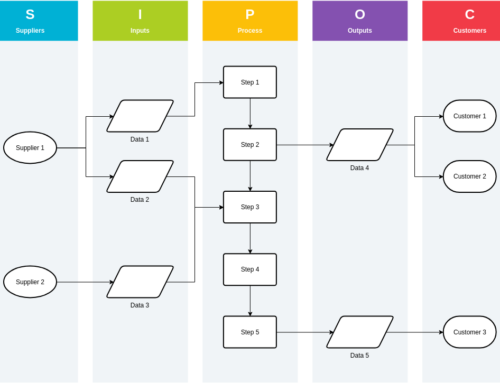I was working with a client’s team to optimize their production line last week. We eliminated travel and motion waste which resulted in roughly doubling the throughput of the line. The improvements were easy to make and clear to those involved in the project. In these situations someone inevitably asks, “Why didn’t we do this earlier?”
That’s the big question, “Why doesn’t work get done?” It’s not just process improvement work that seems to be overlooked but lots of other important tasks are never completed by us or the teams we manage.
The answer to this riddle may be found in some common assumptions or Myths about work.
Myth 1: The Obvious Myth
If the work obviously needs to be done it will get done.
Example: IF my kids see the pile at the top of the stairs and it is obvious they need to go downstairs with them THEN they will take the clothes downstairs… right? My wife is constantly amazed at how many trips they will take up and down the stairs, carefully stepping over the pile of nicely folded clothes each time.
Does this happen in your office? Living with broken processes where a simple fix would save everyone involved minutes and hours each week?
Myth 2: The Importance Myth
If the work is important it will get done.
Examples: “Based on customer feedback all we have to do is update our software to be more interactive so we can double our sales.
“It is critical that we implement 5S to reduce the number of safety incidents we’ve been seeing lately.”
These activities are mission critical actions so they will get done, right?
Myth 3: The Easy Myth
If it is easy to do it will get done.
In many production areas eliminating non value added steps like stacking inventory, reducing the distance between work areas, and removing clutter is so easy. Yet employees and their managers choose to live with the waste day after day.
Judging by the way you are smiling and nodding your head I think you agree, just because something is important, easy, and obvious doesn’t mean it will get done.
How to overcome these myths and get more work done!
The key to overcoming these myths has to do with Newton’s laws of physics. “An object in motion tends to stay in motion unless…” Our day to day work routine tends to stay the same unless disrupted, acted upon by a new force, a system for change. Here’s what that positive disruptive system might look like.
- Schedule daily, weekly, and monthly process reviews to identify work that needs to be done.
- Gemba walks
- Value Stream Maps
- KPI Reviews with Root Cause Analysis
- Prioritize the work. Formally select the top 2 as a team. Set due dates and a single owner responsible for leading the work team.
- Schedule a set time each week to perform the process changes or work you decided to perform. Make process improvement work part of your calendar. It is just as, if not more important, than your “normal” work.
- Reward and Hold Accountable those who are assigned the work by scheduling the report out meeting at the same time the work is prioritized. When there are clear due dates and visibility to work tasks the likelihood of them getting done more than doubles. And accountability turns into positive recognition as work owners can showcase what their team accomplished.
Did you notice the theme to these steps? Schedule the time to perform the Obvious, Important, Easy work!
Being disruptive is a good thing. People don’t mean to leave great work lying around. They want to pick it up and get it done. Our job as leaders is to provide our teams with a system to overcome the Myths of Work and help our teams succeed.
Cedro Toro
Cedro Toro is a Lean Six Sigma guru, strategy consultant, sought after speaker, and the Founder of KPI Fire.



